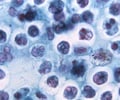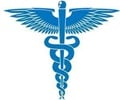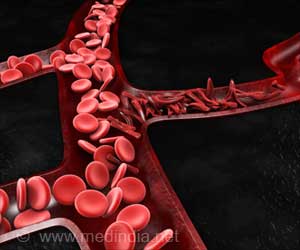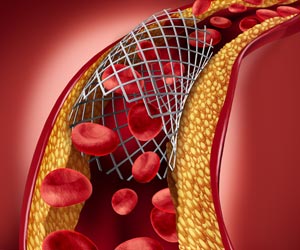A study has revealed that a combination of two drugs may alleviate radiation sickness in people who have been exposed to high levels of radiation.

In a paper published online by the journal Science Translational Medicine, the scientists report the beneficial effects, in mice, of a combination of a fluoroquinolone antibiotic (similar to the commonly used human antibiotic ciprofloxacin, or "Cipro") and a synthetic version of the natural human infection-fighting protein BPI. Mice that received the combination a day after being exposed to high doses of radiation fared far better than mice that received neither or only one of the agents. Whereas radiation exposures of that magnitude almost always prove fatal within a month, 80 percent of the mice that received the two agents were alive and apparently healthy a month into the study.
The study's lead author is Eva Guinan, MD, of Dana-Farber, and the senior author is Ofer Levy, MD, PhD, of Children's Hospital Boston.
The investigators also found that the ability to generate new blood cells – which can shut down in the aftermath of radiation exposure – rebounded much more quickly and vigorously in the mice treated with fluoroquinolone and rBPI21 (the synthetic version of BPI), potentially contributing to their return to health.
"Both fluoroquinolone antibiotics and rBPI21 have been shown to be quite safe in humans," says Levy. "Their combined effectiveness in our study involving mice is an indication that they may be equally beneficial in people."
The research potentially represents a major step in the United States government's efforts to build a stockpile of therapies to counter radiological dangers.
Advertisement
Radiation sickness, also known as acute radiation syndrome, varies with the amount of radiation an individual receives. The first signs of the disease usually are nausea and vomiting, which can be followed by fever, dizziness, weakness, bloody vomit and stools, difficulty breathing, and infection. The body's blood-making tissue, nervous system, digestive tract, lungs, and cardiovascular system all can be affected. At very high doses, radiation is usually fatal.
Advertisement
When bacteria or certain toxins enter the blood under normal conditions, the body's immune system responds by dispatching neutrophils – white blood cells – to destroy the intruders. The neutrophils release a payload of BPI (bactericidal/permeability-increasing protein), which sticks tightly to molecules called endotoxins on the surface of the bacteria. The binding not only helps BPI kill the bacteria but also blocks inflammation caused by live or dead bacteria – something that conventional antibiotics do not do.
When a person is exposed to high levels of radiation, however, the ability to generate neutrophils is almost obliterated. "It's a perfect storm of disease-causing events," Guinan remarks. "Radiation results in bacteria and endotoxins entering the bloodstream at the same time that the body's defenses are lowered."
The treatment approach developed by Guinan, Levy and their colleagues takes direct aim at two potential contributors to radiation sickness: bacteria and the endotoxins on their surface. "We theorized that a two-drug therapy would be most effective," Levy states. "Others had already shown some benefit to treatment with fluoroquinolones after radiation; at least part of the benefit came from killing bacteria in the blood. The second, rBPI21, would bind to, neutralize, and 'mop up' the endotoxins released by the dying bacteria, thereby removing the trigger of the inflammation process."
In the study, researchers exposed mice to radiation levels of 7 gray (by comparison, the amount emitted by a standard X-ray machine is 0.01 grays.) At those levels, radiation is 95 percent lethal to mice within 30 days.
Twenty-four hours after the radiation exposure, researchers began treating some of the mice with daily doses of fluoroquinolone antibiotic, some with twice-daily doses of rBPI21, and some with both. The mice that received both agents not only had much higher survival rates than the others, but their ability to generate new blood cells also recovered much more quickly.
The promise of this approach is underscored by the nature of the two agents, the study authors say. Both have a proven safety record in humans and can be stored for long periods of time, making them suitable for stockpiling.
The use of rBPI21 was inspired by research in patients whose blood-making tissue undergoes changes similar to those of people exposed to high levels of radiation: cancer patients who undergo bone marrow or stem cell transplants. Such transplants involve high doses of chemotherapy and in some cases radiation therapy, which kills cancer cells but also destroys the blood-forming tissue of the bone marrow, followed by an injection of stem cells to rebuild the blood supply.
"We measured BPI levels in patients receiving stem cell transplants and found they were BPI deficient while also having bacterial endotoxin in their bloodstream," says Levy, who first studied BPI as a graduate student at New York University with the protein's discoverers, Peter Elsbach, MD, PhD, and Jerrold Weiss, PhD. "These observations led to the hypothesis that replenishing BPI could decrease the toxicity of radiation," Levy adds.
The current study is the product of five years of work and collaboration between Levy, Guinan and their associates. "My experience in the field of stem cell transplantation, including the use of total-body irradiation, and caring for patients with diseases of the bone marrow has been a perfect complement to Ofer's expertise in neutrophil function and innate immunity [the arm of the immune system that is the first line of defense against infection]," Guinan comments. "This result is a promising new strategy for response to a nuclear event."
Source-Eurekalert











